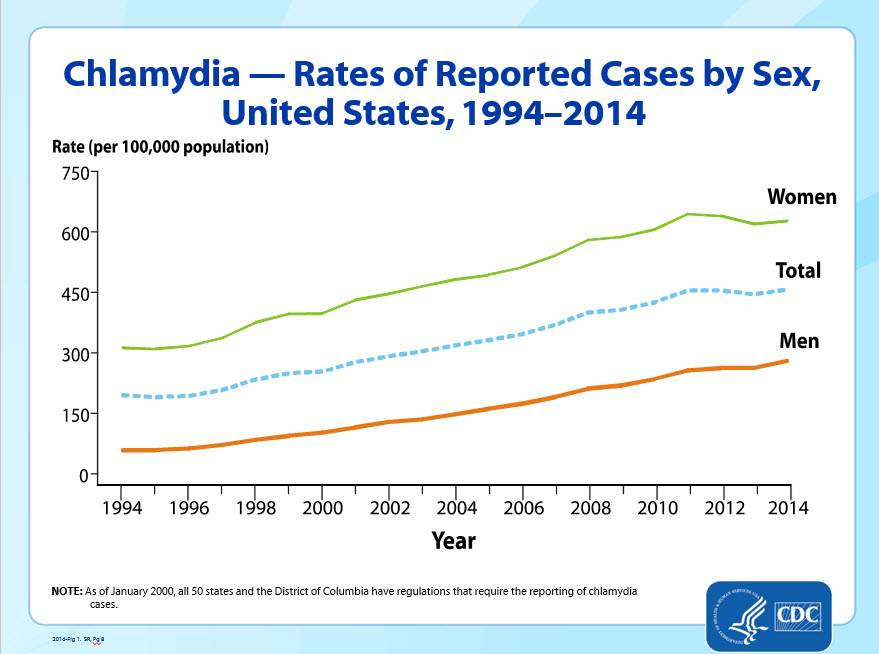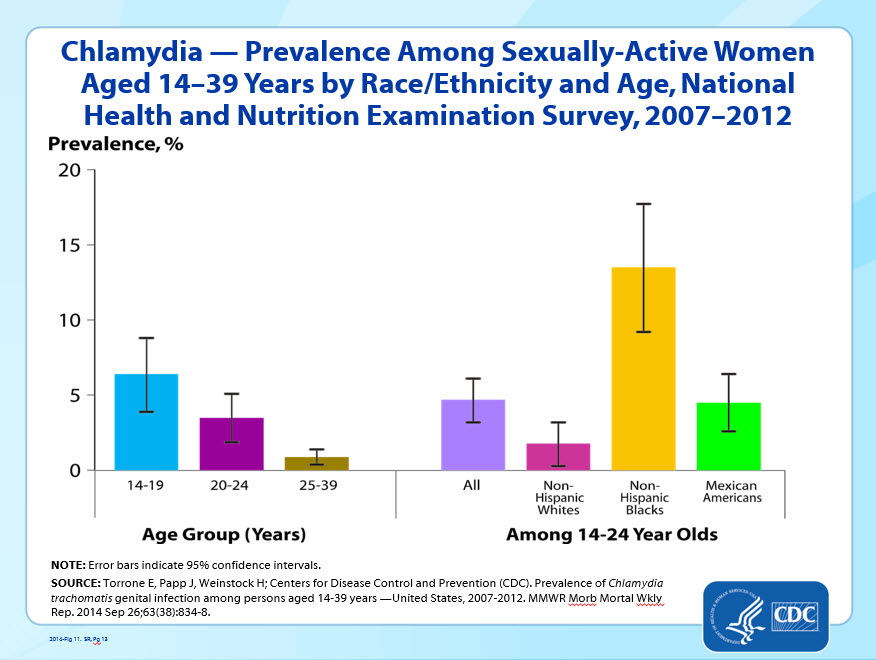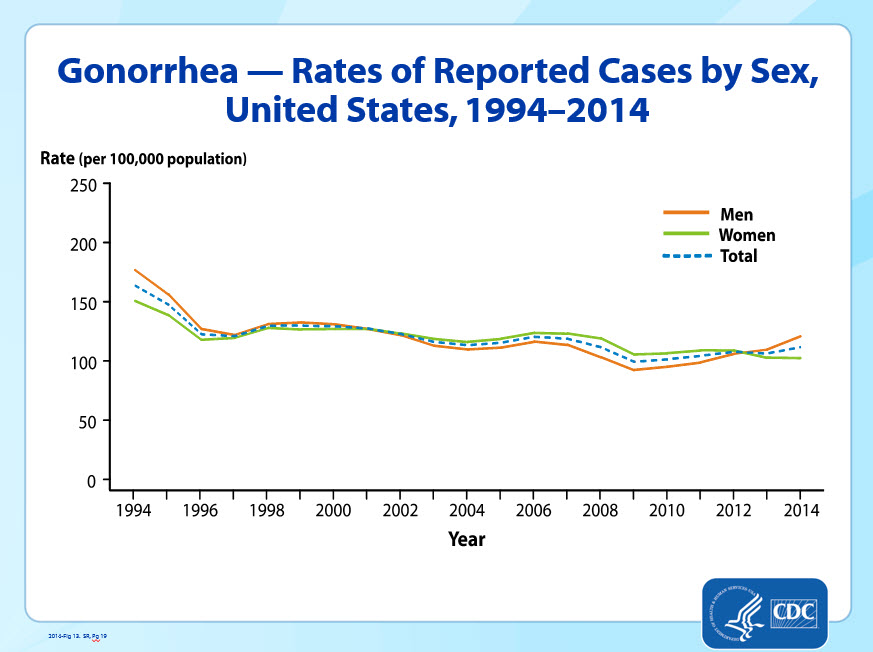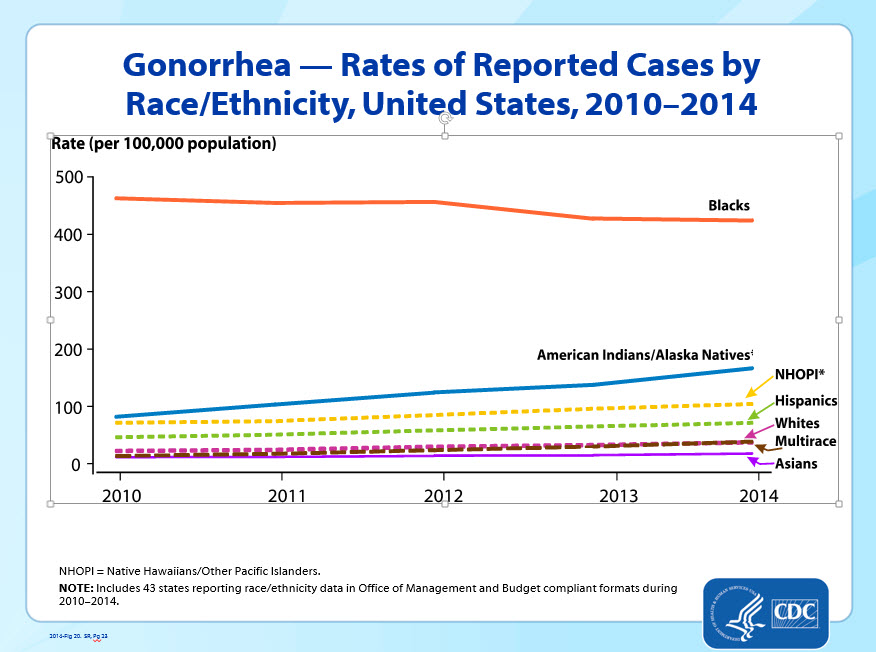Urethritis epidemiology and demographics
|
Urethritis Microchapters | |
|
Diagnosis | |
|
Treatment | |
|
Case Studies | |
|
Urethritis epidemiology and demographics On the Web | |
|
American Roentgen Ray Society Images of Urethritis epidemiology and demographics | |
|
Risk calculators and risk factors for Urethritis epidemiology and demographics | |
Editor-In-Chief: C. Michael Gibson, M.S., M.D. [1]; Associate Editor(s)-in-Chief: Seyedmahdi Pahlavani, M.D. [2]
Overview
Urethritis is the cause of several millions of healthcare visits in the United States. It is most common among sexually active young adults. The most common etiologies for urethritis are Chlamydia Trachomatis and N. gonorrhea; available epidemiological data focus on these two pathogens.
Epidemiology
Chlamydia and gonorrhea are the most commonly reported diseases to the US Centers for Disease Control and Prevention (CDC). Worldwide, there are an estimated 78 million cases of gonorrheal and 131 million of chlamydia yearly.[1][2]
Incidence
- Chlamydia trachomatis is the most common reportable disease in the US; 1,441,789 chlamydial infections were reported to the CDC in 2014 which corresponds to a rate of 456.1 cases per 100,000 population.
- Gonorrhea: In 2014, a total of 350,062 gonorrhea cases were reported, and the national gonorrhea rate increased to 110.7 cases per 100,000 population in the US[3].
Prevalence
Based on The National Health and Nutrition Examination Survey, the overall prevalence of chlamydia among persons aged 14–39 years was 1.7% (95% Confidence Interval [CI]: 1.4–2.0) during 2007-2012.[4]
Demographics
Gender
- Chlamydia trachomatis: In 2014, the overall rate of chlamydial infection in the United States among women (627.2 cases per 100,000 females) based on reported cases was over two times the rate among men (278.4 cases per 100,000 males)[3].
- Gonorrhea: In 2014, in the United States incidence of gonorrhea was reported 120 cases per 100,000 males, while it was reported 100 cases per 100,000 female.
Age
- Chlamydia trachomatis: Almost two-thirds of chlamydia infections occur among youths aged 15-24 years.[5]
- Gonorrhea: The highest prevalence rates were found in ages 20 to 24 years both in men and women.
Race
- Chlamydia trachomatis: In 2014, the chlamydia rate in African-Americans was 6 times the rate in Caucasians, and the rate among American Indians/Alaska Natives was almost 4 times the rate among Caucasians.[4]
- Gonorrhea: In 2014, the rate of reported gonorrhea cases remained highest among African-Americans (405.4 cases per 100,000 individuals). The rate among African-Americans was 10.6 times the rate among Caucasians (38.3 cases per 100,000 population). The gonorrhea rate among American Indians/Alaska Natives (159.4 cases per 100,000 individuals) was 4.2 times that of Caucasians.[4]
-
Rate of Chlamydia reported cases by gender
-
Chlamydia Prevalence by race and age
-
Rate of Gonorrhea reported cases by sex
-
Gonorrhea Prevalence by race
References
- ↑ WHO epidemiology http://www.who.int/mediacentre/factsheets/fs110/en/ (2016) Accessed on September 26, 2016
- ↑ Torrone E, Papp J, Weinstock H (2014). "Prevalence of Chlamydia trachomatis genital infection among persons aged 14-39 years--United States, 2007-2012". MMWR Morb. Mortal. Wkly. Rep. 63 (38): 834–8. PMID 25254560.
- ↑ 3.0 3.1 "National Overview - 2014 STD Surveillance".
- ↑ 4.0 4.1 4.2 "Chlamydia - 2014 STD Surveillance".
- ↑ Chlamydia CDC Fact Sheet. CDC.http://www.cdc.gov/std/chlamydia/stdfact-chlamydia-detailed.htm#_ENREF_3. Accessed on September 28,2016



